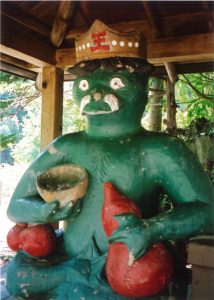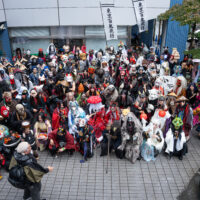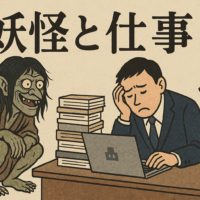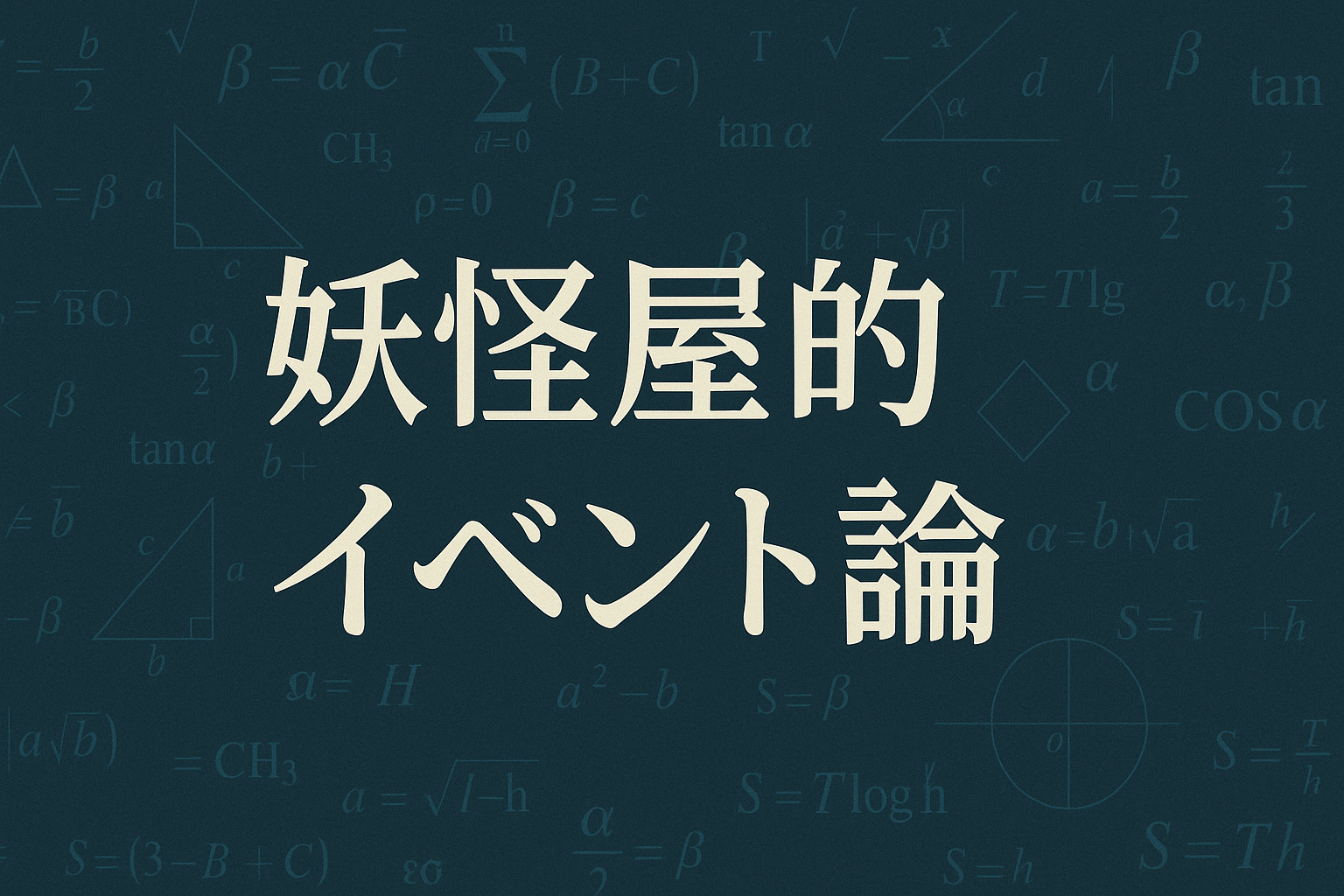
Mintuchikamui and the Kappa
Nice to meet you. My name is Keishiro Watanabe and I've just joined the team as a writer.
He currently splits his time between Hokkaido and Tokyo, and works as a management and IT consultant, but he studied folklore and cultural anthropology at university and continues to research yokai as his life's work.
From now on, I would like to talk about yokai associated with Hokkaido, where I live, as well as current news related to business and the economy, so I hope you will look forward to it.
In the first episode, we will introduce some monsters associated with Hokkaido.
The most famous monster in Hokkaido isKoropokkuruIs that so?
This person has been featured on this site before, and is found under the leaves of a butterbur plant.
By the way, the largest butterbur in Japan, the "lauan butterbur," grows to a height of 2-3 meters, making a person look dwarf when standing next to it.
At a roadside station in Ashoro Town, famous for its lauan grass production, there is a photograph on display of Matsuyama Chiharu, a famous Ashoro native, standing next to a lauan grass, looking like a dwarf.
By the way, the image below, which was also used as the thumbnail, is of a Koropokkuru at the Museum of Northern Peoples in Hakodate.

Another famous Ainu monster, alongside Koropokkuru, isMintuchikamuiis.
Mintuchikamui is a half-human, half-beast spiritual being from Ainu folklore. It is about the size of a human child and is said to be mischievous.
"Mintuchi" is the Japanese word for "mizuchi" in the language of Yamato, meaning water god.
A god associated with water, this yokai has characteristics such as being the size of a child and having a penchant for mischief.
Don't you think you have a lot in common?
Yes, Mintuchikamui is,KappaIt is said to be a monster similar to the above.
The concept of "Mintuchi" (Kappa) itself was brought to Hokkaido from Honshu. Also, the legend of the origin of Mintuchi Kamui dates back to the Edo period, when a ship from the mainland brought an epidemic to Hokkaido. Considering this, it is possible that the concept of a god originally present in the Ainu people was assimilated with the concept of a kappa brought from Honshu.
Nowadays, in the hot spring town of Jozankei in Sapporo, Hokkaido, there is Kappa Daio and many other kappas of different sizes (although they are artificial). When traveling from Sapporo Station to Jozankei, it is convenient to take the express bus called "Kappa Liner".
↓This is Kappa Daio in Jozankei.

Kappa are monsters that appear in folklore all over the country, but here in Hokkaido they are a familiar and major monster.
By the way, there is a theory that the Koropokkuru are actually the Kuril Ainu (a tribe with a different culture and traditions than the Hokkaido Ainu and Sakhalin Ainu).
Whether it is Mintuchikamui or the kappa, there must be some reason why they are passed down, so it may be that there were actually human beings or animals similar to the kappa, or perhaps the kappa have been entrusted with a message that should be passed down to future generations by passing it down.
There are many different legends about kappa all over the country, and they have dozens of different names (Garappa, Medochi, Enko, Hyosube, etc.), which are interesting because they reflect regional differences (Okinawa's Kijimuna is sometimes said to be similar to kappa), so I would like to introduce them to you if I have the opportunity.
This time, rather than talking about Hokkaido's yokai, I ended up talking about Hokkaido's kappa, but I hope that it is clear that Hokkaido is a major habitat for kappa and other yokai.
So, thank you for your continued support.
Text and photos by Keijiro Watanabe
References: "Selected Japanese Folklore Dictionary" (Fukuda Ajio, Yoshikawa Kobunkan), "Ainu Language and Oral Literature" (Nibutani Ainu Culture Museum, Biratori Town), "Tohoku Studies Vol. 7 <Special Feature> The Spiritual History of the <North>" (Akasaka Norio, Tohoku Culture Research Center, Tohoku University of Art and Design), "Ainu Epic Poems, Myths and Sacred Traditions" (Kubotera Itsuhiko, Iwanami Shoten), "Understanding Ainu Culture and History in One Hour" (Segawa Takuro, Takarajimasha Shinsho)
■ Keishiro Watanabe (Kei-chan)
Born in Asahikawa, Hokkaido. Graduated from the School of Human Sciences at Waseda University. An independent researcher of monsters.
He currently splits his time between Sapporo, Hokkaido, and Tokyo, and works as a management and IT consultant, but he studied folklore and cultural anthropology at university, and continues to study yokai as his life's work.
I am currently writing articles about monsters associated with Hokkaido, where I currently live, as well as current news about business and economics.
Twitter:https://twitter.com/keishiro_w








No comments yet.